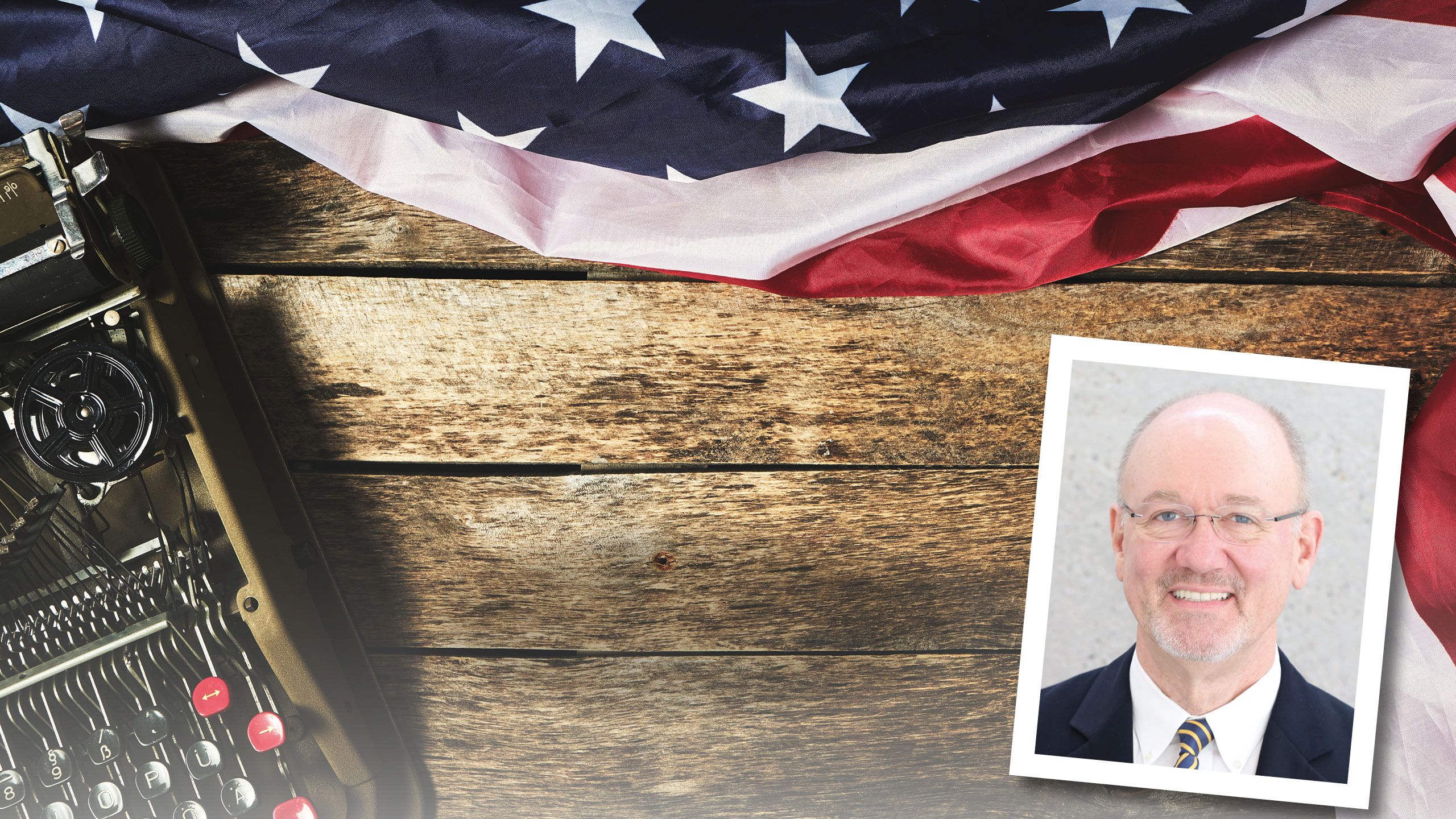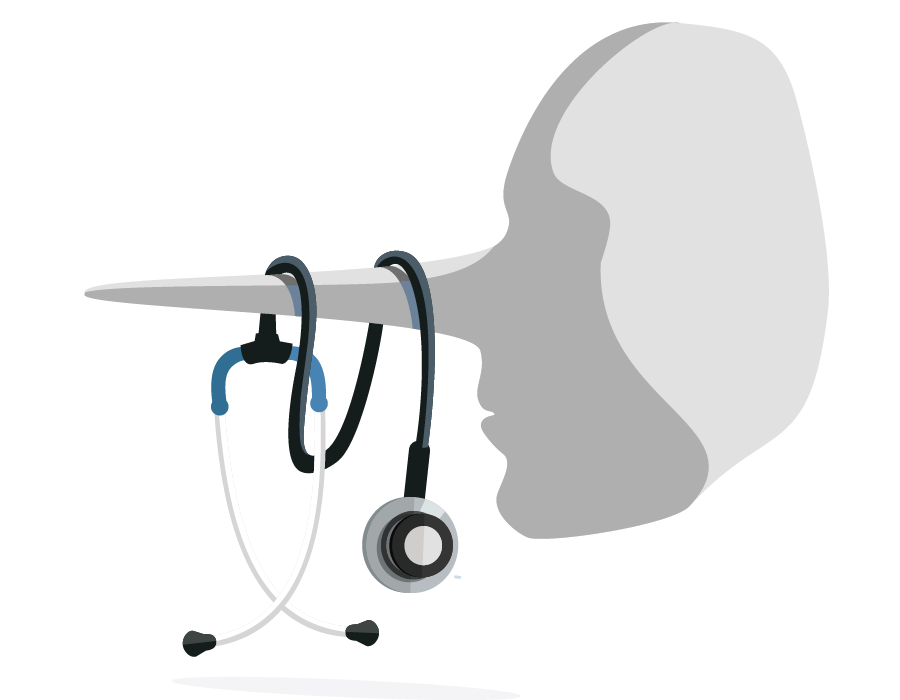Letter from
America
Eric Dierks recounts tales of medical imposters

Dear colleagues,
There was something odd about him. The newly arrived French surgeon was visiting our hospital in Texas to study American trauma management, yet due to an ankle injury he had sustained shortly after his arrival in America he was unable to stand for extended periods of time. This made participating in surgery out of the question. His cast seemed oddly shaped and he used his single crutch irregularly.
He filled his days seated in the operating room staff lounge, mostly chatting with nurses. He seemed to avoid substantive conversations with our trauma surgeons, who I later learned dismissed him as a benign quack. It was rumoured he had developed a relationship with one of the nurses who, in addition to providing him lodging, had loaned him money due to some problem with his bank in France. Following his departure to return home for a family emergency, we realised he was not only a fake doctor, but a swindler. At least he never attempted surgery.
This anecdote occurred decades ago when this correspondent was a senior resident in ENT. No patients were harmed and the only damage sustained involved the ego and the bank account of at least one nurse. Today this would be a crime.
“In one case, a San Francisco man performed liposuction in his home while smoking a cigar and having the patient hold the IV bag”
One of the most successful American fake doctors was a Maryland man who practised medicine without proper credentials for 25 years. Oluwafemi Charles Igberase, know to his patients as ‘Dr Akoda’, came to the US from Nigeria in 1991 and within a month had obtained his first fraudulent Social Security number. Here in the Colonies, each state licenses their physicians separately, so the fake doctor had one licence in Virginia and a separate one in Maryland. Igberase had at least some medical education, as he completed two years of a residency in New Jersey before being dismissed when it was discovered the Social Security number he had used was not his. Not letting this stand in his way, he completed an OB/GYN residency in Maryland and went on to obtain medical licensure and practice there for many years before being caught. Igberase pleaded guilty in November 2016 to the federal fraud charge of misusing a Social Security account number to fraudulently obtain a medical licence. He admitted forging or altering his medical diploma, medical transcripts and letters of recommendation. He was sentenced to six months in prison.
According to a 1984 New York Times article, fraudulent medical diplomas and documentation have enabled the bearers of these credentials to enrol in residencies such as paediatrics, family medicine and psychiatry, with one a fourth-year resident in surgery. Fortunately, there were no reports of patient harm.
“An unusually low fee for a cosmetic
surgery performed at a site other than an accredited medical facility is a flapping red flag”
Also in 1984, a federal committee investigated the problem of fake doctors and heard from a witness who was in prison for three years for selling bogus medical diplomas. This individual bribed officials at one of the (then) 60 medical schools in the Dominican Republic to give bogus degrees, transcripts and supporting documentation for $2,700 per ‘student’. You are probably thinking these events occurred years ago, before computerisation simplified the verification of credentials. Sadly, contemporary fake doctors have some effective workarounds.
The California Medical Board began a programme entitled Operation Safe Medicine that in 2013 reviewed 61 cases of alleged illegal fake doctors. A woman in California posing as a doctor of naturopathy diagnosed people with Lyme disease and prescribed injections of bovine stem cells plus dimethyl sulfoxide. The fake naturopath charged the sum of $30,000 for these ‘treatments’. One of her patient/victims required six weeks in hospital to recover.
In another case, a San Francisco man performed liposuction in his home while smoking a cigar and having the patient hold the IV bag. This individual assumed the name of a legitimate physician assistant in the area whose name was very similar to that of the faker.

How to spot a fake doctor
• Common denominators of fake doctors who have been temporarily successful include a foreign diploma and credentials. High-quality fake diplomas work the best. Fraudsters have a low threshold to overstating their false credentials, such as adding a PhD.
• A remote site of practice is attractive to a medical imposter, especially if the site has difficulty attracting legitimate physicians. Hospital administrators may be motivated not to check too closely and only take a fleeting glance at credentials to fill a long-vacant slot.
• Fraudsters usually have more than a passing knowledge of medical terminology, often obtained by previous employment in a hospital or other medical setting. One fake psychiatrist in Germany got his vocabulary of psychiatric terminology from his experience as an inpatient in psychiatric hospitals.
• A heavy dose of charisma is a big help. If patients actually like the faux doctor, they will be more likely to overlook minor irregularities in their vocabulary and demeanour. An unusually low fee for a cosmetic surgery performed at a site other than an accredited medical facility is a flapping red flag.
• Perhaps the most notorious American fake physician was Charles Brinkley. He gained notoriety around 100 years ago for his innovative but thoroughly bogus treatment for impotence. His ‘treatment’ involved surgically embedding a testicle from a young goat into the scrotum of his patient. Despite the efforts of the American Medical Association to shut down his operation, Brinkley became a millionaire and the goats got to keep their remaining testicle.
This Letter From America will be my last as I follow my friend Roger Currie into pastures new. I hope you have been amused and occasionally educated by my ramblings on what passes for the practice of surgery in America
